Amperage Calculator
The electrical equipment we buy in our daily lives is labeled with rated power and rated voltage, but other related data such as current are not labeled. Our page can calculate the current of electrical appliances through their voltage and tools.
Calculating the current of LED lights has great benefits for the circuit. We can choose LED lights based on the load of the entire circuit, which prevents our circuit from overloading.
Current, voltage, resistance, and Ohm's law
What is the current?
The flow of charge carriers in a conductor or semiconductor is called current. Current is the flow rate of an electric charge through a conductive medium relative to time.
Charge carriers can be electrons, holes, protons, ions, etc. However, current is usually conducted by electrons and holes. There are no holes in a conductor, so it conducts current through electrons; There are electrons and holes in semiconductors, so both electrons and holes can conduct current in semiconductors.
French physicist Andre Marie Ampere used I as the symbol for electric current, and named the unit of electric current after him as Ampere or Ampere (A).
In mathematics, the velocity of charge (Q) relative to time can be expressed as:
I = dQ/dt
The unit of charge is coulomb (C), and 1 coulomb is the amount of charge transferred by a current of 1 ampere in 1 second. 1 coulomb is approximately equivalent to the charge of 6.25 × 10 ^ 18 electrons.
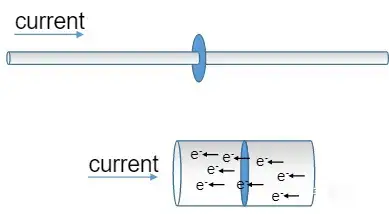
How is electric current generated?
An atom is composed of negatively charged electrons, positively charged protons, and uncharged neutrons. Protons and neutrons have a larger mass and are located at the center of the atom, resulting in a positively charged nucleus. Due to the electrostatic attraction between the nucleus and electrons, electrons always revolve around the nucleus.
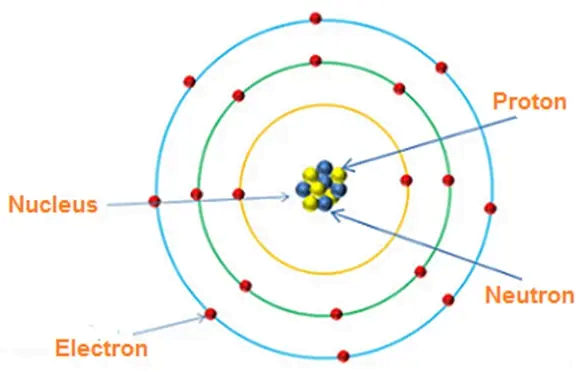
Electrons rotate around the atomic nucleus on different orbitals, each with a corresponding energy level. Electrons that are very close to the atomic nucleus have very low energy, while electrons that rotate in orbits far away from the nucleus have high energy. The electrons in the outermost orbit are called valence electrons, which are loosely attached around the atom and only require a small amount of energy to separate them from the atom. The form of energy can be heat, light, or electric field. Electrons separated from electrons are called free electrons, which transfer negative charges from one place to another. This creates an electric current.
When a potential difference is applied between two points in a conductive medium, current flows from a higher potential to a lower potential, and the higher the potential difference, the more current flows between the two points.
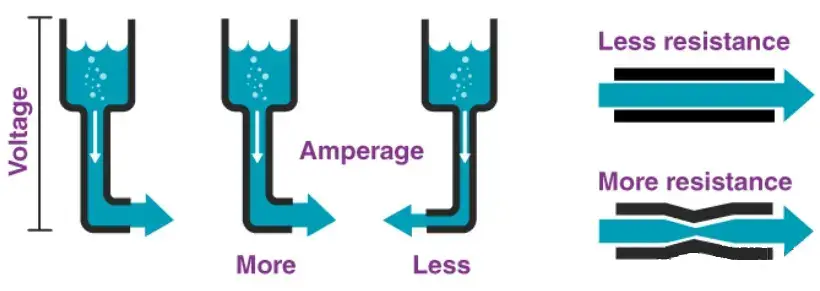
In order to gain a deeper understanding of the relationship between current, voltage, and resistance, water in a water pipe can be used as a metaphor for current. When pressure is applied to the pipe, the water in the pipe flows. The greater the resistance of the pipe to the water flow, the smaller the outflow of water.
How does current move in a conductor?
Conductors are generally made of metals, which are composed of atoms and have relatively weak bond interactions between their outer or valence state electrons and their atomic nuclei. When a pile of metal atoms come together, the outermost electrons can easily gather together, resulting in an electron group that is not constrained by a specific atomic nucleus. A very small voltage can cause electron groups to move. Copper, gold, silver, and aluminum are good conductors. For insulators, there is no free electron movement that forms current.
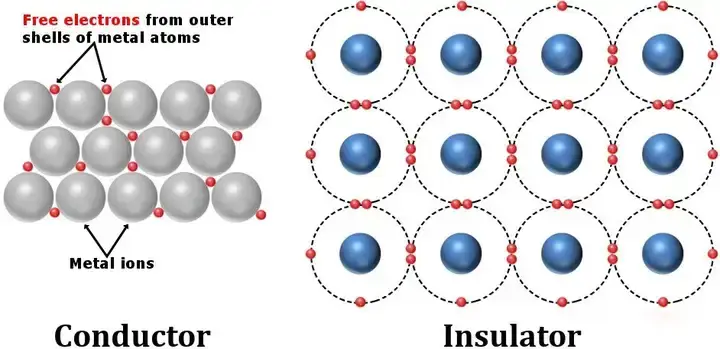
What is voltage?
Simply put, voltage is pressure, the force that pushes electrons from one point to another, which is generated by an imbalance of charges. If wax and sheepskin are rubbed together, it will cause an excess of electrons (negative charge) in the wax and a shortage of electrons (positive charge) in the wool, resulting in an imbalance of charges between them. This imbalance can cause two objects to attract each other.
If a wire is used to connect wax and wool, electrons will flow because some excess electrons in the wax will flow back to the wool through the wire, filling the electron shortage there.
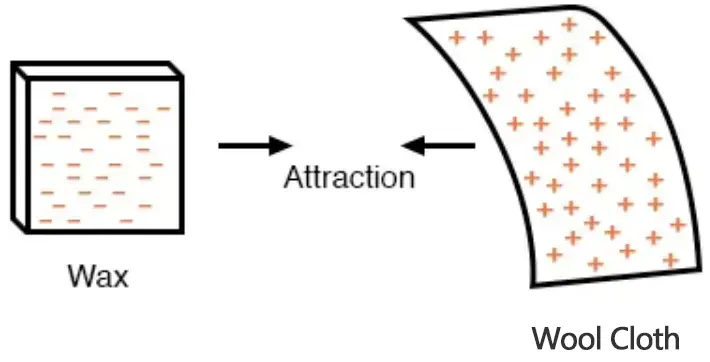
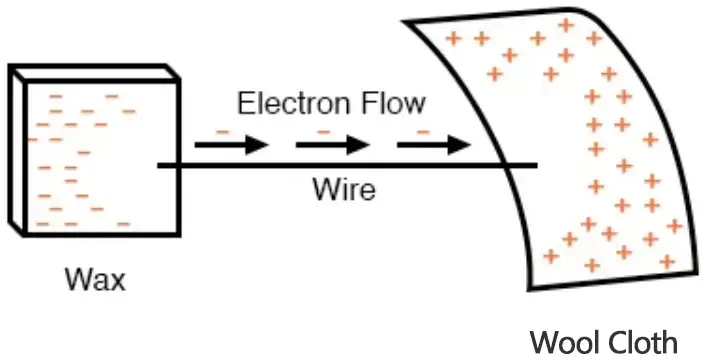
The International System of Units for voltage is volts (V, abbreviated as V), which is equal to the work done by a unit positive charge moving from point A to point B under the action of an electric field force. The direction of voltage is defined as the direction from high potential to low potential. To understand the concept of voltage, imagine a water pump that is pumping water. The pump pushes water to flow in the pipeline. The function of a pump is like voltage, and the function of water is like charge. Electric charges require a complete closed path to flow.
What is resistance?
The resistance experienced by the current flowing through the battery. Every material in the world has a current resistance, and some materials have very low resistance, called conductors. And other materials have very high resistance, called insulators. The unit of resistance is ohms (Ω).
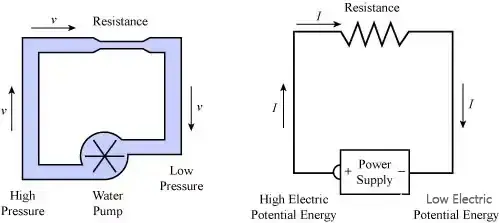
The internal resistance of a battery usually includes ohmic resistance and polarization resistance, and polarization resistance also includes electrochemical polarization resistance and concentration polarization resistance.
ohmic resistance
Ohmic internal resistance is composed of the resistance of materials such as positive and negative electrodes, electrolyte, diaphragm, and the resistance of various components. Due to the presence of Ohmic resistance, battery polarization occurs when current flows through the battery, commonly referred to as Ohmic polarization or resistance polarization.
Electrochemical polarization internal resistance
When current flows through the electrode, electrochemical polarization occurs, and the speed of electrochemical reactions on the electrode lags behind the speed of electron movement on the electrode, causing electrochemical polarization. This internal resistance is called electrochemical polarization resistance.
Concentration polarization internal resistance
The polarization caused by the diffusion rate of ions involved in the reaction in the solid phase being lower than the electrode reaction rate is called concentration polarization. The internal resistance generated by concentration polarization is called concentration polarization internal resistance.
The magnitude of concentration polarization internal resistance is influenced by environmental factors such as the composition of active substances in the electrode material, electrolyte concentration, and temperature. The internal resistance of a battery can be an important indicator for evaluating its performance, and its magnitude directly affects the working voltage, output power, and other performance of the battery. Generally speaking, a practical chemical power source should have a low internal resistance.
Ohm's Law
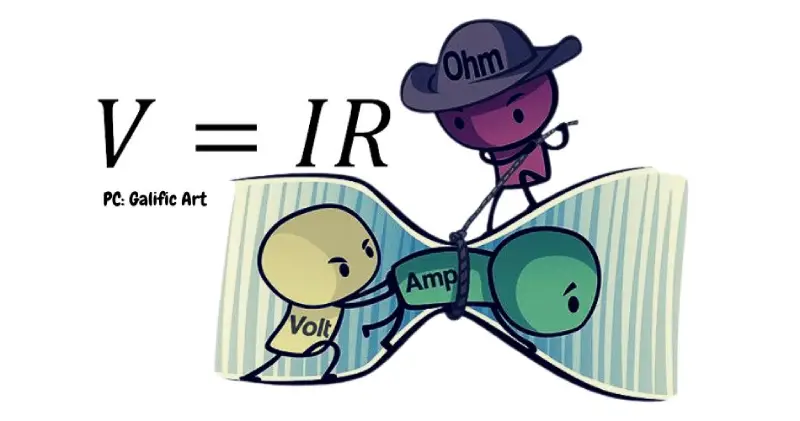
Ohm’s law is a fundamental law in the field of electricity. It was discovered by George Ohm and named after him. Ohm’s law provides the relationship between current, voltage, and resistance. It states that the voltage across any resistor is equal to the current multiplied by the resistor.
Namely: U=IR
Ohm’s law also applies to alternating current circuits, where the relationship between voltage and current is more complex than that of direct current. Because current is variable, in addition to resistance, other forms of current resistance are also generated, called reactance. The combination of resistance and reactance is called impedance (Z).
FAQ on Current, Voltage, and Resistance
What is the direction of current flow
The direction of movement of positive charges is the direction of current flow. Outside the power supply, the direction of current flows from the positive pole to the negative pole of the power supply.
In metal conductors, the direction of electron motion is opposite to the direction of current flow.
What is protective grounding? What are the advantages?
Protective zero connection is a method of directly connecting the metal parts of equipment that are not charged under normal circumstances to the system using wires. Adopt protective grounding method to ensure personal safety and prevent electric shock accidents.
What is the operating principle of overcurrent protection?
When a phase to phase short circuit fault occurs in the power grid, the current will suddenly increase and the voltage will suddenly decrease. Overcurrent protection is to set the operating current of the current relay according to the requirements of line selectivity. When the fault current in the circuit reaches the operating value of the current relay, the current relay operates according to the selective requirements of the protection device, selectively cutting off the fault circuit.
What is safe voltage?
The voltage that will not cause any damage to various tissues of the human body when in contact with electricity is called safe voltage. The safe voltage is below 36V.
What is the voltage range of commonly used electrical appliances?
The working range of electrical appliances in most households and commercial environments is 110~240V.
The role of ground wire
The main function of a ground wire is to connect the metal casing of electrical equipment to the ground, in order to prevent the risk of electric shock in the event of electrical failure.



